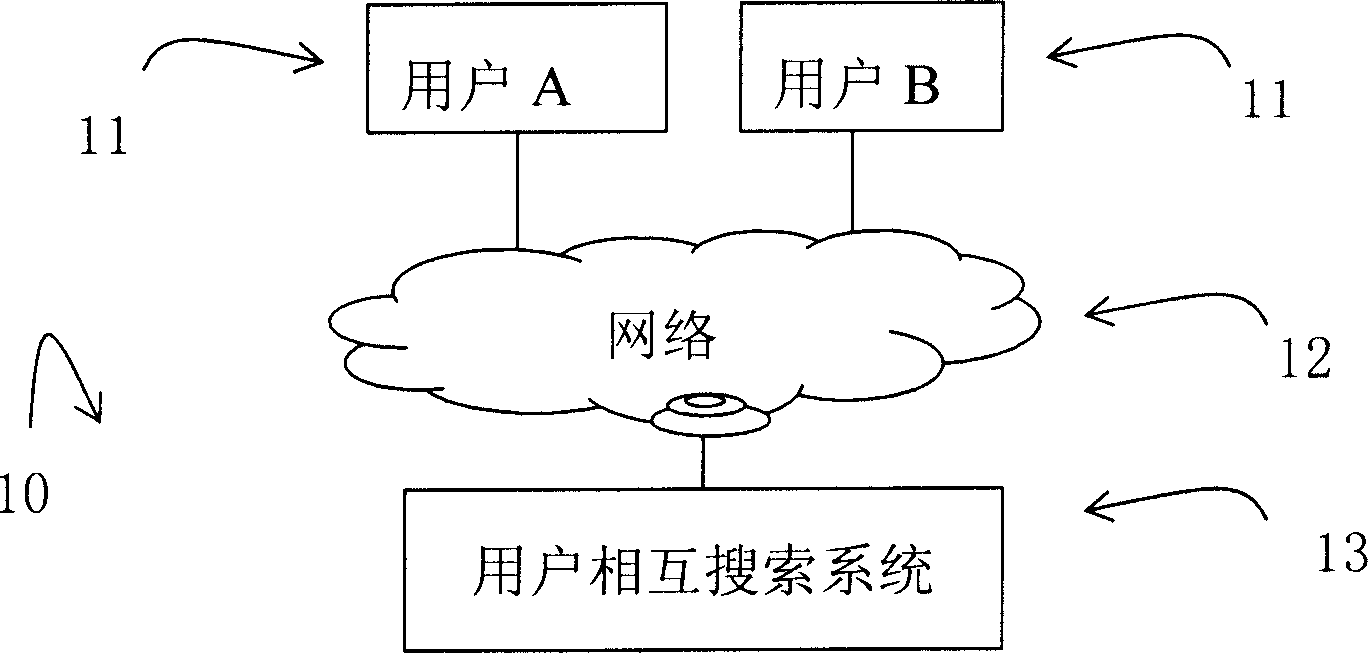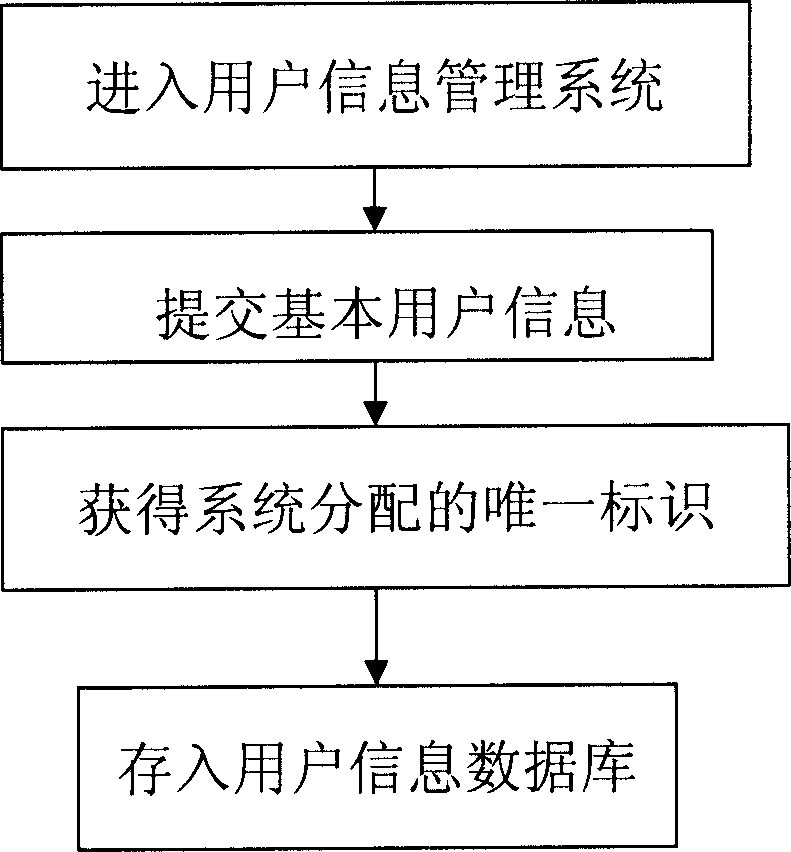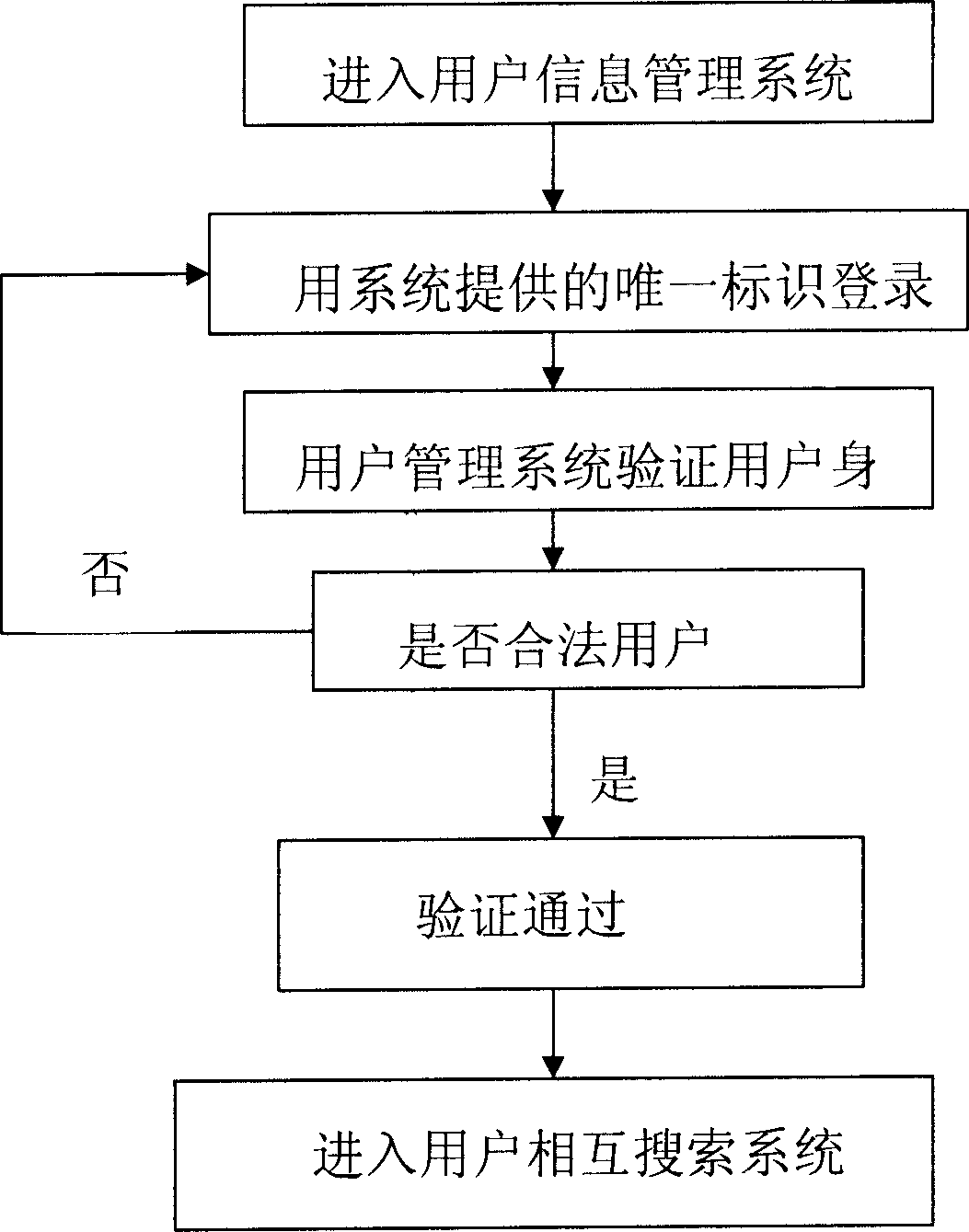Mutual searching method for Internet customers and its searching engine
A search engine and search method technology, applied in special data processing applications, instruments, electrical digital data processing, etc., can solve the problem that users cannot find user groups as they like
- Summary
- Abstract
- Description
- Claims
- Application Information
AI Technical Summary
Problems solved by technology
Method used
Image
Examples
Embodiment Construction
[0041] Embodiments of the present invention will be described below in conjunction with the accompanying drawings. For the convenience of description, the Internet user who initiates the search is referred to as the searcher, and the searched Internet user is referred to as the relevant user. The existing search engine for searching web pages or other contents is called a search engine, and the embodiment of the present invention is called a user mutual search system (or simply this system).
[0042] figure 1 An operating environment 10 representing one embodiment of a user mutual search system. As shown in this figure, operating environment 10 may include one or several computing devices 11, which may include some personal computers. Each computing device 11 may be connected to a network 12 . Network 12 generally includes one or several interconnected sub-networks, and these networks 12 may include one or more local area networks (LANs) and / or wide area networks (WANs). ...
PUM
 Login to View More
Login to View More Abstract
Description
Claims
Application Information
 Login to View More
Login to View More - R&D
- Intellectual Property
- Life Sciences
- Materials
- Tech Scout
- Unparalleled Data Quality
- Higher Quality Content
- 60% Fewer Hallucinations
Browse by: Latest US Patents, China's latest patents, Technical Efficacy Thesaurus, Application Domain, Technology Topic, Popular Technical Reports.
© 2025 PatSnap. All rights reserved.Legal|Privacy policy|Modern Slavery Act Transparency Statement|Sitemap|About US| Contact US: help@patsnap.com



